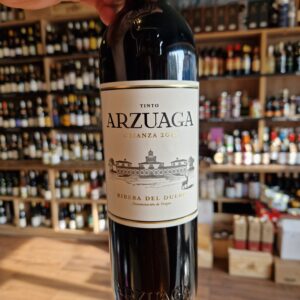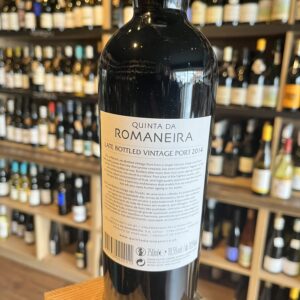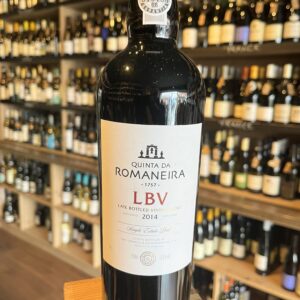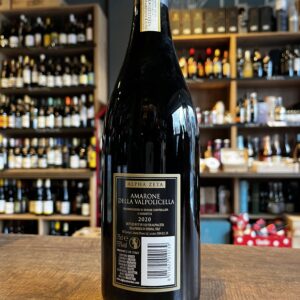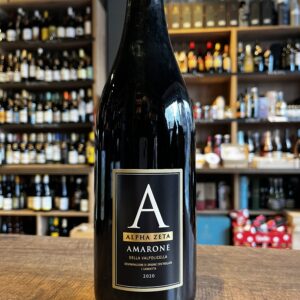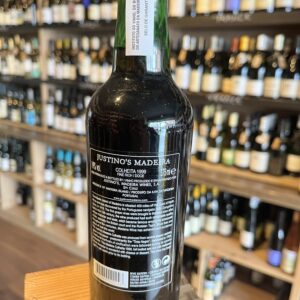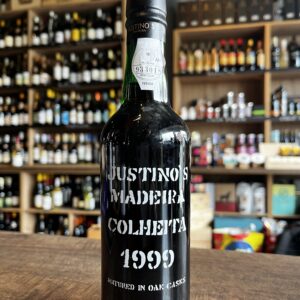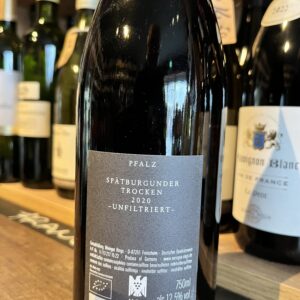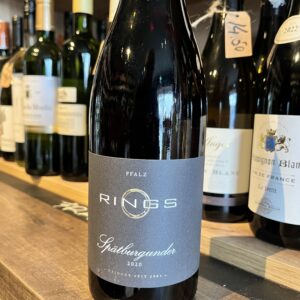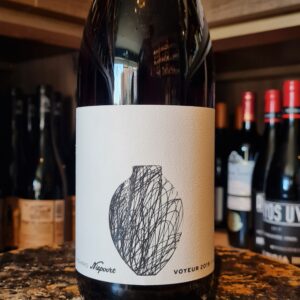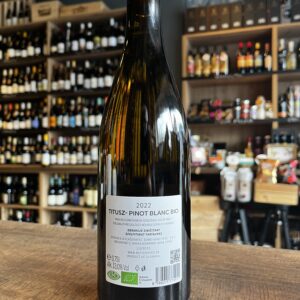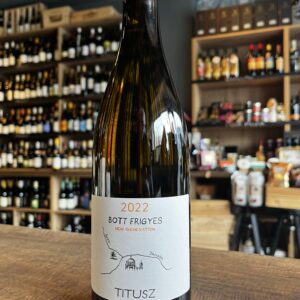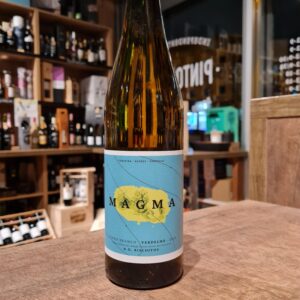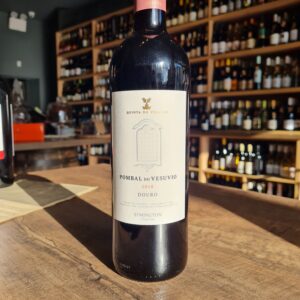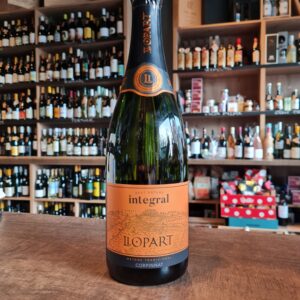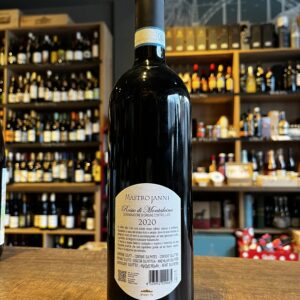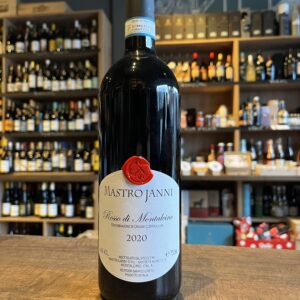-
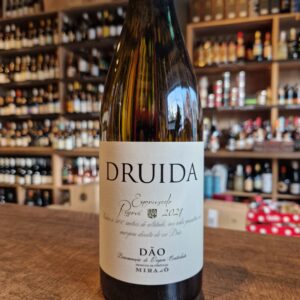 Mira do O produces expressive, concentrated wines. Despite the concentration, all the wines are fresh, elegant, well-balanced and shows great maturation potential. Dao region is valued by wine lovers for its expressiveness, freshness, concentration of taste and longevity of the wine. The region is a little further away from the Atlantic Ocean, but its cold winds still cool Dao vineyards. For this reason, the wine is high levels of acidity and great balance. The poor granite soil prevalent in the region gives the wines more texture, depth and spice. It is worth mentioning that here is a register and a large part of the old, local Portuguese grapes. Mira do O Druida Encruzado Reserva is made from a small vineyard located on a 500-meter plateau. This plateau provides protection from excess Atlantic moisture. At the same time, the temperature fluctuations caused by this altitude allow the grapes to ripen perfectly during the day, but they are more refreshing due to the cooling vineyards. The winemaker follows the principle of minimalist intervention: to change the wine as little as possible during its production. For this reason, the very characteristics of the grape stand out. Pair it with aperitif, roast white meats, sautee greens
Mira do O produces expressive, concentrated wines. Despite the concentration, all the wines are fresh, elegant, well-balanced and shows great maturation potential. Dao region is valued by wine lovers for its expressiveness, freshness, concentration of taste and longevity of the wine. The region is a little further away from the Atlantic Ocean, but its cold winds still cool Dao vineyards. For this reason, the wine is high levels of acidity and great balance. The poor granite soil prevalent in the region gives the wines more texture, depth and spice. It is worth mentioning that here is a register and a large part of the old, local Portuguese grapes. Mira do O Druida Encruzado Reserva is made from a small vineyard located on a 500-meter plateau. This plateau provides protection from excess Atlantic moisture. At the same time, the temperature fluctuations caused by this altitude allow the grapes to ripen perfectly during the day, but they are more refreshing due to the cooling vineyards. The winemaker follows the principle of minimalist intervention: to change the wine as little as possible during its production. For this reason, the very characteristics of the grape stand out. Pair it with aperitif, roast white meats, sautee greens -
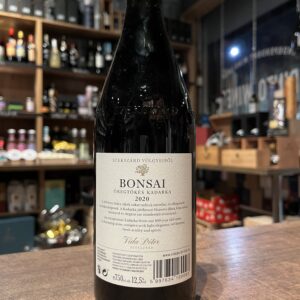
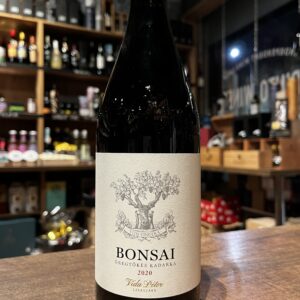 An exceptional Kadarka from the Vida winery's 100 year old vines. The history of the name for this wine is also peculiar. One day, Peter Sr. was presenting his winery to one of his Japanese partners. When they were about to approach the vineyards, the gentleman noticed this little vine and jumped off the car and started shouting “BONSAI!” pointing at them. The tiny appearance of these stocks resembles a Bonsai, which in Japanese culture represents wisdom, a wish for long life and is also a symbol of good luck. A small curiosity is that Kadarka is a grape that was widely available before the Soviet union and well praised. With the Iron Curtain nearly fell into extinction, it's delicious but takes a huge effort to grow and is best from old vines. Reminds you of any other grape with certain similarities?
An exceptional Kadarka from the Vida winery's 100 year old vines. The history of the name for this wine is also peculiar. One day, Peter Sr. was presenting his winery to one of his Japanese partners. When they were about to approach the vineyards, the gentleman noticed this little vine and jumped off the car and started shouting “BONSAI!” pointing at them. The tiny appearance of these stocks resembles a Bonsai, which in Japanese culture represents wisdom, a wish for long life and is also a symbol of good luck. A small curiosity is that Kadarka is a grape that was widely available before the Soviet union and well praised. With the Iron Curtain nearly fell into extinction, it's delicious but takes a huge effort to grow and is best from old vines. Reminds you of any other grape with certain similarities? -
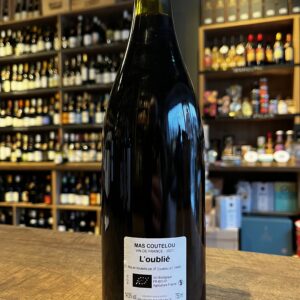
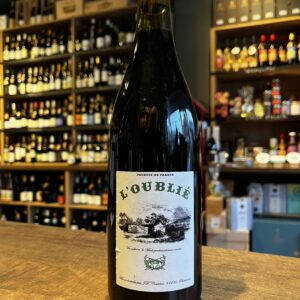 The varieties Jeff grows are all from the south of France, and on his estate located in Puimuisson (a few kilometers from Beziers), the vines coexist with thousands of fruit trees to promote biodiversity. From this base, each vintage offers a range of unique cuvées. Wines he invents at any time following his intuition and that only go onto the market when he considers them representative of the character of the place. Specifically, Mas Coutelou L'Oublié Version is a wine made from Syrah, Carignan and Cinsault vines.
The varieties Jeff grows are all from the south of France, and on his estate located in Puimuisson (a few kilometers from Beziers), the vines coexist with thousands of fruit trees to promote biodiversity. From this base, each vintage offers a range of unique cuvées. Wines he invents at any time following his intuition and that only go onto the market when he considers them representative of the character of the place. Specifically, Mas Coutelou L'Oublié Version is a wine made from Syrah, Carignan and Cinsault vines. -
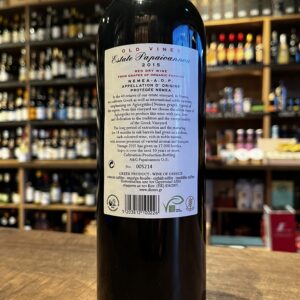
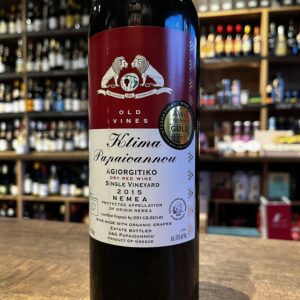 Thanasis Papaioannou was regarded as one of the most important figures of modern Greek winemaking. His belief is a combination of indigenous varieties and organic viticulture are the vital ingredients to produce balanced wines reflecting the terroir. Today, his son works with 57 hectares of organically certified vineyards, located in the Nemea region of the Peloponnese. The wines demonstrating real character at exceptional prices. Nemea is arguably Greece's most important red-wine region, located in the northeastern corner of the Peloponnese peninsula. The village of Nemea is around 20 miles (35km) southwest of Corinth, and the appellation that surrounds the village is geographically the largest in Greece. Around 40 wineries are located there and the area has seen a huge amount of investment and growth over the past few decades. The surrounding mountains and valleys have been producing wine for centuries. Agiorgitiko is an ancient Greek grape variety mostly planted in Nemea, named for the small St George's Church found within the boundaries of the appellation: Agiorgitiko translates as "St George's grape“. A wide range of styles are made from this red grape variety, from lighter, fruitier wines to rich, age-worthy examples such as this. The label references the ‘Lion of Nemea’; a creature of Greek legend, killed by Heracles. Their Old Vines cuvée is made from the estate's oldest Agiorgitiko vines. This dish with duck breast, Brussels sprouts with bacon and Polenta is a perfect partner for the Old Vines from Papaioannou, where the black cherry note is an ideal combination.
Thanasis Papaioannou was regarded as one of the most important figures of modern Greek winemaking. His belief is a combination of indigenous varieties and organic viticulture are the vital ingredients to produce balanced wines reflecting the terroir. Today, his son works with 57 hectares of organically certified vineyards, located in the Nemea region of the Peloponnese. The wines demonstrating real character at exceptional prices. Nemea is arguably Greece's most important red-wine region, located in the northeastern corner of the Peloponnese peninsula. The village of Nemea is around 20 miles (35km) southwest of Corinth, and the appellation that surrounds the village is geographically the largest in Greece. Around 40 wineries are located there and the area has seen a huge amount of investment and growth over the past few decades. The surrounding mountains and valleys have been producing wine for centuries. Agiorgitiko is an ancient Greek grape variety mostly planted in Nemea, named for the small St George's Church found within the boundaries of the appellation: Agiorgitiko translates as "St George's grape“. A wide range of styles are made from this red grape variety, from lighter, fruitier wines to rich, age-worthy examples such as this. The label references the ‘Lion of Nemea’; a creature of Greek legend, killed by Heracles. Their Old Vines cuvée is made from the estate's oldest Agiorgitiko vines. This dish with duck breast, Brussels sprouts with bacon and Polenta is a perfect partner for the Old Vines from Papaioannou, where the black cherry note is an ideal combination. -
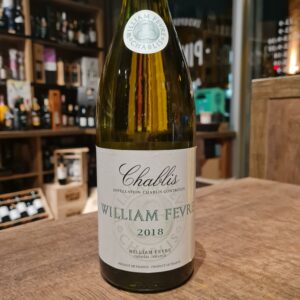
The Fèvre family had been running the Chablis vineyards in northwest France for more than 250 years when William Fèvre brought out the first vintage in this domaine. It was 1959 and William was taking over from his father, the great winemaker who took on 7 hectares of vineyards after World War II. This was the starting point for Domaine Williams Fèvre, one of the largest producers in Chablis, which currently has 78 hectares divided into 90 plots.
Chablis, is the source of the most racy, light and tactile, yet uniquely complex Chardonnay, while considered part of Burgundy, actually reaches far past the most northern stretch of the Côte d’Or proper. Its vineyards cover hillsides surrounding the small village of Chablis about 100 miles north of Dijon, making it actually closer to Champagne than to Burgundy. Champagne and Chablis have a unique soil type in common called Kimmeridgian, which isn’t found anywhere else in the world except southern England. A 180 million year-old geologic formation of decomposed clay and limestone, containing tiny fossilized oyster shells, spans from the Dorset village of Kimmeridge in southern England all the way down through Champagne, and to the soils of Chablis. This soil type produces wines full of structure, austerity, minerality, salinity and finesse.
Pairs well with fish dishes, grilled or in a light sauce; various seafood, oysters and sushi. -
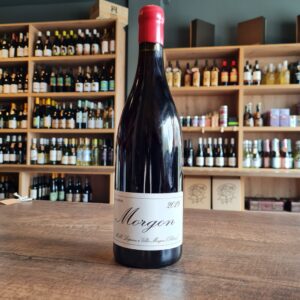 Domaine Marcel Lapierre Morgon is a natural red wine made by Domaine Marcel Lapierre with the Gamay variety in the AOC Morgon (Burgundy). Domaine Marcel Lapierre is one of the pioneer wineries that has been making natural wines since Marcel Lapierre, a true pacesetter among Beaujolais producers, took over the Villié-Morgon estate in 1973. With his work philosophy, he was committed to combining traditional best practices with new technologies so that his wines would be a true reflection of the landscape. In 1981, under the strong influence of natural wine master Jules Chavet, Marcel was among the first to produce wines of minimal intervention, without adding SO2 or any other substance. Domaine Marcel Lapierre Morgon 2018 is a fruity red wine with aromas of cherry, violet and liquorice, covered with a forest freshness and refreshing balsamic tones. On the palate it is structured, fresh and sweet. It begins with a sharp acidity that blends with the touches of fruit and liquorice and the intense minerality. This is a refreshing red, perfect for spring and summer; recommended to drink with charcuterie, paté, cheese, roast ham, roast lamb, roast chicken and turkey and with spicy Thai and Chinese dishes. Serve at the lower end of the suggested temperature range if you like your light red wines served cooler like the French
Domaine Marcel Lapierre Morgon is a natural red wine made by Domaine Marcel Lapierre with the Gamay variety in the AOC Morgon (Burgundy). Domaine Marcel Lapierre is one of the pioneer wineries that has been making natural wines since Marcel Lapierre, a true pacesetter among Beaujolais producers, took over the Villié-Morgon estate in 1973. With his work philosophy, he was committed to combining traditional best practices with new technologies so that his wines would be a true reflection of the landscape. In 1981, under the strong influence of natural wine master Jules Chavet, Marcel was among the first to produce wines of minimal intervention, without adding SO2 or any other substance. Domaine Marcel Lapierre Morgon 2018 is a fruity red wine with aromas of cherry, violet and liquorice, covered with a forest freshness and refreshing balsamic tones. On the palate it is structured, fresh and sweet. It begins with a sharp acidity that blends with the touches of fruit and liquorice and the intense minerality. This is a refreshing red, perfect for spring and summer; recommended to drink with charcuterie, paté, cheese, roast ham, roast lamb, roast chicken and turkey and with spicy Thai and Chinese dishes. Serve at the lower end of the suggested temperature range if you like your light red wines served cooler like the French -
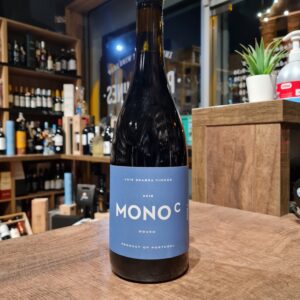 Luis Seabra is a producer that is at the forefront of the “new Douro” movement. Rather than making table wines that are, for all intents and purposes, “Little Ports,” Luis has taken a more balanced, restrained approach to winemaking in the oldest demarcated wine region in the world. His guiding principles are showcasing terroir and nuance above power and extraction. Bright, mineral driven and elegant, Luis’ wines are typically exposés of soil type. With the Mono C, he is taking a look at a particular variety – in this case, Castelão. While Castelão is a grape that is typically found further south in Portugal, Luis has found a mono-planted plot of the light-skinned grape in the Douro and is working his magic to craft a wine of unparalleled delicacy and elegance. Would pair it with charcuterie, grilled pork dishes, roasted poultry
Luis Seabra is a producer that is at the forefront of the “new Douro” movement. Rather than making table wines that are, for all intents and purposes, “Little Ports,” Luis has taken a more balanced, restrained approach to winemaking in the oldest demarcated wine region in the world. His guiding principles are showcasing terroir and nuance above power and extraction. Bright, mineral driven and elegant, Luis’ wines are typically exposés of soil type. With the Mono C, he is taking a look at a particular variety – in this case, Castelão. While Castelão is a grape that is typically found further south in Portugal, Luis has found a mono-planted plot of the light-skinned grape in the Douro and is working his magic to craft a wine of unparalleled delicacy and elegance. Would pair it with charcuterie, grilled pork dishes, roasted poultry -
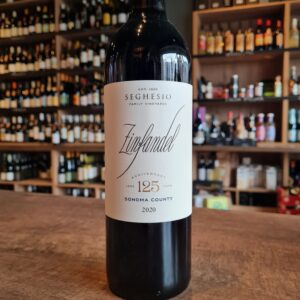 The Seghesio family began making wine in California in 1895 when Edoardo Seghesio planted Zinfandel vines in Alexander Valley. Over the intervening years the third generation of the family, Pete Seghesio and his cousin Ted Seghesio, established the estate as a top producer of Californian Zinfandel. Today the winery has 120 hectares of vineyards which are all farmed sustainably in the appellations of Dry Creek Valley, Alexander Valley and Russian River Valley. The vines for this bottling come from estate vineyards in Dry Creek and Alexander Valley with careful management of yields to ensure excellent quality. The robust flavour profile makes this a great partner for barbecued meats and steak, although it can also be kept in the cellar for another few years.
The Seghesio family began making wine in California in 1895 when Edoardo Seghesio planted Zinfandel vines in Alexander Valley. Over the intervening years the third generation of the family, Pete Seghesio and his cousin Ted Seghesio, established the estate as a top producer of Californian Zinfandel. Today the winery has 120 hectares of vineyards which are all farmed sustainably in the appellations of Dry Creek Valley, Alexander Valley and Russian River Valley. The vines for this bottling come from estate vineyards in Dry Creek and Alexander Valley with careful management of yields to ensure excellent quality. The robust flavour profile makes this a great partner for barbecued meats and steak, although it can also be kept in the cellar for another few years. -
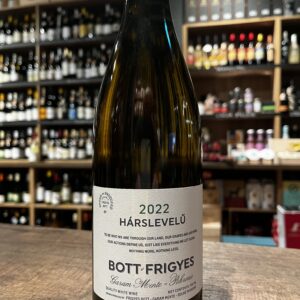 Hárslevelű is one of the most unique grape varieties in Central Europe - a relative of the Hungarian Furmint. It has aromas of linden blossom with honied chestnut, pear and apricot. Dry palate, balanced acidity with a silky texture, medium body. Spontaneous fermentation and 9 months on the lees in Stockinger barrels add complexity, while the great reductive strength comes from the volcanic terroir. Bott Frigyes is a tiny family producer in Southern Slovakia, who takes the Burgundian approach and quality to winemaking with a Central European twist. Single-vineyard Hárslevelű develops well in bottle, so you can also lay them down for a year or two. Very enjoyable on its own, however due to its rich flavours and a delicate volcanic minerality, you can go complex with food pairings. John Dory, turbot or even veal are good choices with high-quality Hárslevelű. Extremely limited. Maximum 1 bottle per order.
Hárslevelű is one of the most unique grape varieties in Central Europe - a relative of the Hungarian Furmint. It has aromas of linden blossom with honied chestnut, pear and apricot. Dry palate, balanced acidity with a silky texture, medium body. Spontaneous fermentation and 9 months on the lees in Stockinger barrels add complexity, while the great reductive strength comes from the volcanic terroir. Bott Frigyes is a tiny family producer in Southern Slovakia, who takes the Burgundian approach and quality to winemaking with a Central European twist. Single-vineyard Hárslevelű develops well in bottle, so you can also lay them down for a year or two. Very enjoyable on its own, however due to its rich flavours and a delicate volcanic minerality, you can go complex with food pairings. John Dory, turbot or even veal are good choices with high-quality Hárslevelű. Extremely limited. Maximum 1 bottle per order. -
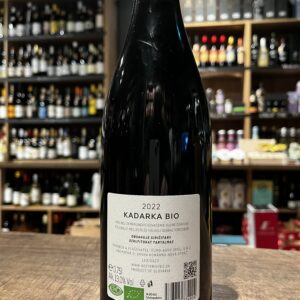
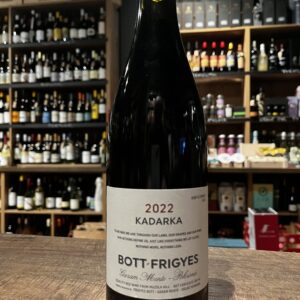 Bott Frigyes is one of Central Europe's key winemakers. Any wine we have tasted from him is of outmost quality and elegance. He focuses on indigenous varities -Furmint, Harslevelu, Kadarka and Kekfrankos with a Burgundian approach; and finesse. Native fermentation and 12 months of ageing takes place in Stockinger barrels, 'the winemaker's Strad' as mentioned by Jancis Robinson MW. Stockinger barrels are used by the likes of Raj Parr, Domaine de Chavelier and Antinori. Each Stickinger is fine tuned by using multiple different oak staves within one barrel from Austria, Hungary and Germany. The “hamburger” method is used for the structured fermentation. Alternating layers of foot stopped grapes, with whole clusters in the middle, then topped with a destemmed and hand crushed layer. This achieves a semi-carbonic quality of high stability and control. Wines are allowed to settle naturally, then bottled unfined and unfiltered. Old school natural. The soil is a volcanic bedrock rich in limestone with streaks of clay. Great fruit intensity, extreme elegance and superbly savoury.
Bott Frigyes is one of Central Europe's key winemakers. Any wine we have tasted from him is of outmost quality and elegance. He focuses on indigenous varities -Furmint, Harslevelu, Kadarka and Kekfrankos with a Burgundian approach; and finesse. Native fermentation and 12 months of ageing takes place in Stockinger barrels, 'the winemaker's Strad' as mentioned by Jancis Robinson MW. Stockinger barrels are used by the likes of Raj Parr, Domaine de Chavelier and Antinori. Each Stickinger is fine tuned by using multiple different oak staves within one barrel from Austria, Hungary and Germany. The “hamburger” method is used for the structured fermentation. Alternating layers of foot stopped grapes, with whole clusters in the middle, then topped with a destemmed and hand crushed layer. This achieves a semi-carbonic quality of high stability and control. Wines are allowed to settle naturally, then bottled unfined and unfiltered. Old school natural. The soil is a volcanic bedrock rich in limestone with streaks of clay. Great fruit intensity, extreme elegance and superbly savoury. -
Out of stock
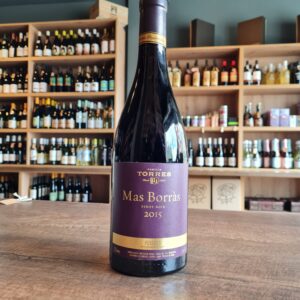 Torres Mas Borras Pinot Noir is a single vineyard wine made from 100% Pinot Noir vines in the Penedès denominación de origen of the Spanish region of Catalonia. The Torres family has been making wine in the ancient Catalán town of Vilafranca del Penedès, south-west of Barcelona, since the 17th Century. It is this tradition combined with innovation, dynamism and commitment to quality that has put Torres firmly on the world map. They remain one of the largest family owned and run wine companies in the world and, under the stewardship of fourth generation Miguel Torres they are committed to sustainable viticulture and green practices. The Torres Mas Borras vineyard is located at 520 metres above sea level in the coolest part of the Upper Penedes area at Santa María de Miralles. At this altitude, the relatively cold summer nights allow a long and balanced ripening, which is desirable for producing elegant and noble Pinot Noir. Deep calcareous clay soils with interspersed layers of gypsum, moderately well drained with a high water holding capacity. Developed over sedimentary material from the Eocene. Thanks to the cool soils and the continental tendency of the climate, these vineyards provide the best conditions for Pinot Noir in the Penedès region. This is why Jacques Bergeret, a Burgundian expert in cultivating Pinot Noir, chose these soils in 1985–1986. The Pinot Noir grapes for this single vineyard wine are usually harvested in late September and are macerated in the skins for 2 weeks after harvest. The wine is fermented in stainless steel with an additional malolactic fermentation in oak barrels. After vinification Torres Mas Borras Pinot Noir is aged in French oak barrels, 30% of which are new, for 9 months. Oak ageing ensure that silky tannins are in harmony with the fresh acidity and cherry fruit typical of Pinot Noir.
Torres Mas Borras Pinot Noir is a single vineyard wine made from 100% Pinot Noir vines in the Penedès denominación de origen of the Spanish region of Catalonia. The Torres family has been making wine in the ancient Catalán town of Vilafranca del Penedès, south-west of Barcelona, since the 17th Century. It is this tradition combined with innovation, dynamism and commitment to quality that has put Torres firmly on the world map. They remain one of the largest family owned and run wine companies in the world and, under the stewardship of fourth generation Miguel Torres they are committed to sustainable viticulture and green practices. The Torres Mas Borras vineyard is located at 520 metres above sea level in the coolest part of the Upper Penedes area at Santa María de Miralles. At this altitude, the relatively cold summer nights allow a long and balanced ripening, which is desirable for producing elegant and noble Pinot Noir. Deep calcareous clay soils with interspersed layers of gypsum, moderately well drained with a high water holding capacity. Developed over sedimentary material from the Eocene. Thanks to the cool soils and the continental tendency of the climate, these vineyards provide the best conditions for Pinot Noir in the Penedès region. This is why Jacques Bergeret, a Burgundian expert in cultivating Pinot Noir, chose these soils in 1985–1986. The Pinot Noir grapes for this single vineyard wine are usually harvested in late September and are macerated in the skins for 2 weeks after harvest. The wine is fermented in stainless steel with an additional malolactic fermentation in oak barrels. After vinification Torres Mas Borras Pinot Noir is aged in French oak barrels, 30% of which are new, for 9 months. Oak ageing ensure that silky tannins are in harmony with the fresh acidity and cherry fruit typical of Pinot Noir. -
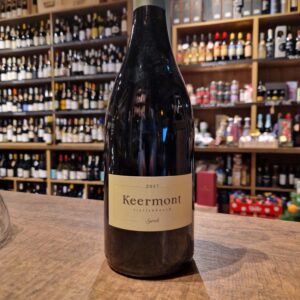 Keermont Vineyards is a specialist wine estate set in the naturally-formed amphitheatre between the Helderberg and Stellenbosch Mountain ranges. All grapes used in producing our wines are grown on Keermont Vineyards. Most of the vineyard parcels grow on deep red clay rich soil derived from sandstone and granite and are surrounded by indigenous vegetation. They lie between 250 and 400 metres above sea level at the top of the valley, and have a variety of aspects from North East to West facing. In 2001, the Wraith family moved to the Western Cape from Gauteng and in 2003 bought two adjacent farms which today make up Keermont Vineyards. Keermont Syrah is a blend of three different Syrah vineyard sites growing on Keermont Vineyards: Steepside Syrah: Growing on a North facing slope in deep, red clay-rich soils; this vineyard generally produces powerful full-bodied wines with rich, spicy flavours. Topside Syrah: An unirrigated west facing vineyard planted at 400m above sea level on rocky sandstone-based soil. Topside Syrah is usually a more aromatic wine with good structure and natural acid. Sweetwater Syrah: Situated in a rocky valley below the Fleurfontein spring, this is the coolest of the three Syrah sites and ripens the latest. Sweetwater Syrah is normally lighter and elegant in style with a herbal aroma. Only produced 12 665 bottles and 145 magnums. Maybe one of these will be yours to enjoy!
Keermont Vineyards is a specialist wine estate set in the naturally-formed amphitheatre between the Helderberg and Stellenbosch Mountain ranges. All grapes used in producing our wines are grown on Keermont Vineyards. Most of the vineyard parcels grow on deep red clay rich soil derived from sandstone and granite and are surrounded by indigenous vegetation. They lie between 250 and 400 metres above sea level at the top of the valley, and have a variety of aspects from North East to West facing. In 2001, the Wraith family moved to the Western Cape from Gauteng and in 2003 bought two adjacent farms which today make up Keermont Vineyards. Keermont Syrah is a blend of three different Syrah vineyard sites growing on Keermont Vineyards: Steepside Syrah: Growing on a North facing slope in deep, red clay-rich soils; this vineyard generally produces powerful full-bodied wines with rich, spicy flavours. Topside Syrah: An unirrigated west facing vineyard planted at 400m above sea level on rocky sandstone-based soil. Topside Syrah is usually a more aromatic wine with good structure and natural acid. Sweetwater Syrah: Situated in a rocky valley below the Fleurfontein spring, this is the coolest of the three Syrah sites and ripens the latest. Sweetwater Syrah is normally lighter and elegant in style with a herbal aroma. Only produced 12 665 bottles and 145 magnums. Maybe one of these will be yours to enjoy! -
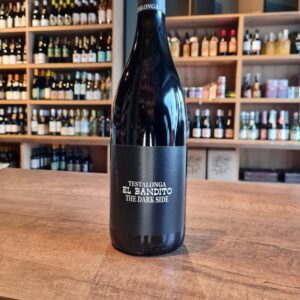 The El Bandito The Dark Side 2017 by Testalonga comes from Shiraz vineyards from the early 2000s - the vines are still in full bloom, but thanks to the low yield, they are already delivering phenolic grapes. The vineyards are cultivated by Craig with no herbicites, pesticides or fungicites. He also does without artificial irrigation. These measures alone have a positive effect on the quality of the grapes and keep the yield low. After hand-picking, the grapes are fermented spontaneously with the vineyard's own yeast and matured in 3000l wooden barrels. After expansion, it is neither fined nor filtered and filled with minimal sulfur. The Testalonga El Bandito The Dark Side has a deep dark color with a black core. It smells of red berries and dark stone fruits, of cloves, mocha and cocoa beans as well as tart spiciness. On the palate it has a present tannin and a fine interplay of acids. In terms of alcohol, the Shiraz is quite slim and straight, but still brings a weighty body into play. The finish is long and dominated by the heavier aromas. The El Bandito The Dark Side Shiraz demands air, so give it a few hours in the carafe before serving it slightly chilled from large glasses with roasted game, braised lamb or an oven-baked bean stew with roasted butter crumbs and thyme.
The El Bandito The Dark Side 2017 by Testalonga comes from Shiraz vineyards from the early 2000s - the vines are still in full bloom, but thanks to the low yield, they are already delivering phenolic grapes. The vineyards are cultivated by Craig with no herbicites, pesticides or fungicites. He also does without artificial irrigation. These measures alone have a positive effect on the quality of the grapes and keep the yield low. After hand-picking, the grapes are fermented spontaneously with the vineyard's own yeast and matured in 3000l wooden barrels. After expansion, it is neither fined nor filtered and filled with minimal sulfur. The Testalonga El Bandito The Dark Side has a deep dark color with a black core. It smells of red berries and dark stone fruits, of cloves, mocha and cocoa beans as well as tart spiciness. On the palate it has a present tannin and a fine interplay of acids. In terms of alcohol, the Shiraz is quite slim and straight, but still brings a weighty body into play. The finish is long and dominated by the heavier aromas. The El Bandito The Dark Side Shiraz demands air, so give it a few hours in the carafe before serving it slightly chilled from large glasses with roasted game, braised lamb or an oven-baked bean stew with roasted butter crumbs and thyme.


